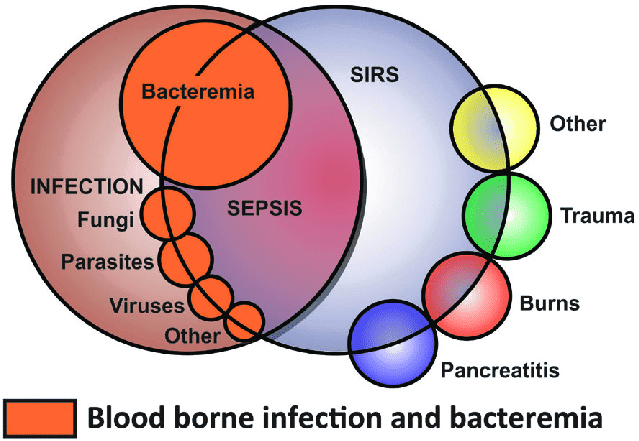Introduction
Bloodstream infections are one of the most serious health conditions. They can be defined as the inflammatory response caused by the invasion of the bloodstream by bacterial or fungal microorganisms. The important task of the microbiology laboratory is to timely detect and test blood-borne pathogens. Additionally, nurses, who are generally in direct contact with patients, need to follow preventive measures, for example, handwashing, to avoid blood infections. Even though BSIs have always been a significant medical issue, the current problems are connected with the resistance of infecting organisms to antibiotics.
Goals and Solutions
In order to decrease the number of BSIs cases, it is necessary to set short- and long-term goals. The short-term solution includes educating nurses, healthcare givers, patients, and caregivers. The long-term goal is to sustain change after the initial education of the medical personnel and patients. Even though handwashing is a simple preventive measure, educating medical staff and patients about its importance may reduce the risk of BSIs. Another example is proper catheter management, which is an effective way to decrease BSIs cases in oncological settings. Members of management, educators, nurses, and patients all play a significant role in achieving long-term results.
Data Collection
Data can be collected through laboratories and from frontline nurses who are in direct contact with patients. Laboratories can assist in identifying the source of the infection and the way blood cultures are acquired, while nurses may explain the barriers to hand hygiene and other preventive measures. Finally, it would be appropriate to consult infection prevention teams. For example, The Centers for Disease Control and Prevention aims to develop strategies to prevent BSIs. According to their recommendations, the major solution is to properly train the staff in terms of hygiene at the workplace. Therefore, the ideal benchmark is to decrease the BSIs occurrence by providing high-quality personnel education.
Data Analysis
The data analysis showed that a third of mortalities are associated with bloodstream infections. Other negative outcomes include prolonged hospital stay, reduced patient satisfaction, and high hospital costs. Figure 1 demonstrates that bacteria play a more significant role in causing blood infections compared to fungi, viruses, and other microorganisms. Impaired skin integrity is the major cause of implications since it facilitates the invasion of microorganisms into the blood system. BSIs are estimated at 15% of real cases, and the prognosis for patients with blood infections is usually poor.

Improvement of Proposed Solutions and the Preferred Solution
BSIs, or sepsis, can be a threat to a patient’s life, and therefore, timely recognition and intervention are required. The major cause is connected with the use of invasive devices in patient care, such as intravenous cannulas, central lines, and urinary catheters. An unsafe clinical environment and various psychological factors also increase the risk of infection.
Therefore, care providers should be taught to conduct all invasive procedures in a safe way. It is also necessary to provide healthcare institutions with enough equipment and resources required to reduce the risk of BSIs. Moreover, research activities aimed to improve the quality of care may contribute to solving the problem of frequent BSIs occurrence. Research is the preferred solution since it addresses functional challenges and helps determine the root cause of the problem and necessary preventive measures.

Conclusion
In order to sustain the change, it is necessary to make it a part of the corporate culture. Medical institutions need to develop regulations and guidelines aimed to solve the problem of BSIs. The main measures should include research activities, implementation of findings, and evaluation of the outcomes. Moreover, it is important to understand that combatting BSIs is teamwork, where all stakeholders, including nurses and patients, play an important role.
In conclusion, bloodstream infections are one of the major problems in the field of healthcare. They are associated with poor medical prognosis and a high level of mortalities. Therefore, sterility of invasive devices, nurses’ and patients’ education, and research activities are the most effective ways of reducing the rate of BSIs occurrence.
References
Aliyu, S., Cohen, B., Liu, J., & Larson, E. (2018). Prevalence and risk factors for bloodstream infection present on hospital admission. Journal of Infection Prevention, 19(1), 37 – 42.
Bell, T., & O’Grady, N. (2017). Prevention of central line–associated bloodstream infections. Infectious Disease Clinics of North America, 31(3), 551-559.
Centers for Disease Control and Prevention (CDC). (2015). BSI. Web.
Hallam, C., Jackson, T., Rajgopal, A., & Russell, B. (2018). Establishing catheter-related bloodstream infection surveillance to drive improvement. Journal of infection prevention, 19(4), 160 – 66.
Kell, D. B., & Pretorius, E. (2015). On the translocation of bacteria and their lipopolysaccharides between blood and peripheral locations in chronic, inflammatory diseases: The central roles of LPS and LPS-induced cell death. Integrative Biology, 7(11), 1339-1377.
McLaws, M. L. (2015). The relationship between hand hygienge and healthcare-associated infections: its complicated. Infection and Drug Resistance, 8(1), 7-18.
Vijayan, A., & Boyce, J. M. (2018). 100% use of infection control procedures in hemodialysis facilities: Call to action. Clinical Journal of the American Society of Nephrology, 13(4), 671-673.
Viscoli, C. (2016). Bloodstream infections: The peak of the iceberg. Virulence, 7(3), 248-251.